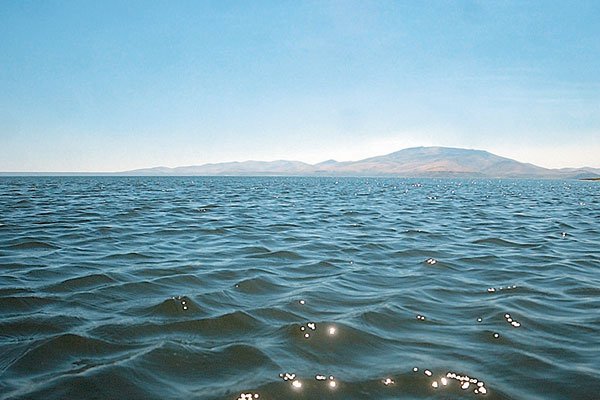Water district discovered traces during tests in 2002 and
2003
Very minute traces of some pharmaceutical drugs were found in the Calero reservoir in 2002 and 2003 as well as in water imported from sources like the San Francisco Bay delta and the San Luis reservoir.
A recent study conducted by the Associated Press found that at least 41 million Americans in 24 cities swallow traces of “a vast array of pharmaceuticals, including antibiotics, anti-convulsants, mood stabilizers and sex hormones” when drinking tap water.
Bruce Cabral, water quality manager for the San Jose-based Santa Clara Valley Water District that provides drinking water to 1.8 million people, said some traces of pharmaceuticals are not absorbed in the body and remain after clearing waste treatment plants. Other biological waste is not disposed of properly.
“With recent advances in analytical testing we can now detect chemicals measured in parts per trillion, which is like a fraction of a drop in an Olympic-sized swimming pool,” said Cabral. “We have the best treatment techniques operating, but research on treatment is continuing as contaminants are discovered and we have to decide which ones should be treated.”
Richard Luthy, chair of Stanford University’s Department of Civil and Environmental Engineering, said some chemicals in water are so dilute that research can’t determine the effects on humans.
“We can detect more things at increasingly lower concentrations in water and we don’t know what the health effects are at those levels,” said Luthy.
“(At Stanford) we research how these compounds move in the environment and how they move through treatment systems. Finding them in the reservoir is not the same as finding them in drinking water since they go through a tubing process.”
Luthy said most of the testing on the effects of this drinking water on human health is conducted by national agencies like the Environmental Protection Agency and the Centers for Disease Control and Prevention.
Though the EPA Web site said research shows no health effects from low-level exposure to these drugs in drinking water, it acknowledges certain scenarios need closer research such as the risk of consuming that contaminated water during pregnancy.
U.S. Sen. Barbara Boxer, chairwoman of the Senate Committee on the Environment and Public Works, sent a letter Tuesday to EPA Administrator Stephen Johnson questioning what is being done about drinking water sanitation. As a prelude to hearings on pharmaceutical pollution in drinking water her committee has planned for April, she requested a detailed summary of the EPA’s plans for resolving the issue and disclosing its research to be delivered no later than April 4.
“The public has a right to know what the EPA is doing to protect our families and communities from drugs in our drinking water,” said Boxer in a press release.
Cabral said his agency is sharing research with Contra Costa Water District and other Bay Area water agencies on how best to treat water that might find its way to kitchen taps.
“We’re also looking at pharmaceuticals that might be a concern at low levels and doing pilot testing with spiked water on how best to treat it,” said Cabral. “If they’re there we’ll find which treatment is most effective at removing them.”














